Garden Work Bench Ideas: Creative Solutions for Your Outdoor Space
Working in your garden can be so much more enjoyable with the right setup. One of the best ways to enhance your gardening experience is by adding a garden work bench. A garden work bench provides a dedicated space for potting plants, storing tools, and organizing your outdoor workspace.
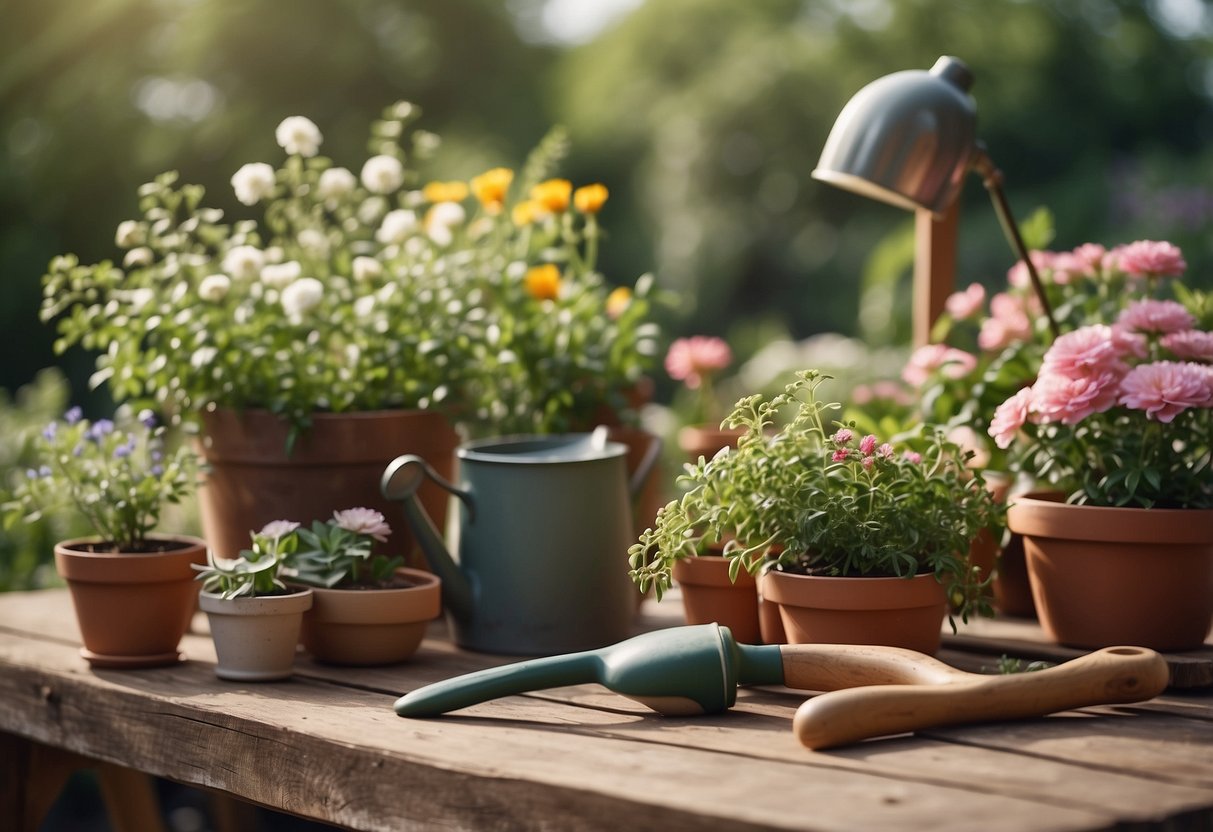
Whether you have a small backyard or a larger garden area, there are plenty of garden work bench ideas to suit your needs. From simple DIY projects to more elaborate designs, you can find the perfect bench to make your gardening tasks easier and more fun.
1) Rustic Potting Table

A rustic potting table gives your garden a cozy, vintage feel.
You can use reclaimed wood to build this table, adding character and charm.
Including shelves below the table will increase storage for your gardening tools.
You can find more inspiration for these kinds of tables in this DIY guide.
2) Farmhouse Workbench with Storage

You can create a stylish and functional farmhouse workbench with storage for your garden.
Choose a design that has shelves or drawers beneath the bench. This adds so much storage space for your tools, pots, and other garden supplies.
One great plan is the narrow farmhouse bench with an X-leg design. It’s perfect for beginners and only requires a few tools. You can build it for around $30, making it both affordable and practical.
3) Foldable Garden Workbench

A foldable garden workbench is perfect if you have limited space in your backyard or garage.
You can quickly set it up when you need to pot plants or complete other garden tasks, and just as easily fold it away for storage.
Some designs even include shelves and hooks, giving you more options for organizing your tools. For specific plans and dimensions, you can check out these potting bench plans or these diy potting bench plans.
4) DIY Wooden Pallet Workbench

Making a workbench from wooden pallets is both practical and budget-friendly. You can use pallets that you might have lying around, or get some from local businesses.
Start by selecting sturdy pallets for the bench top and legs. You might need to cut them to size with a saw. Sand the wood to avoid splinters and give it a smoother finish.
Assemble the bench by attaching the legs to the top using screws or nails. Make sure everything is level and stable. You can even add shelves underneath for extra storage.
5) Upcycled Door Garden Bench
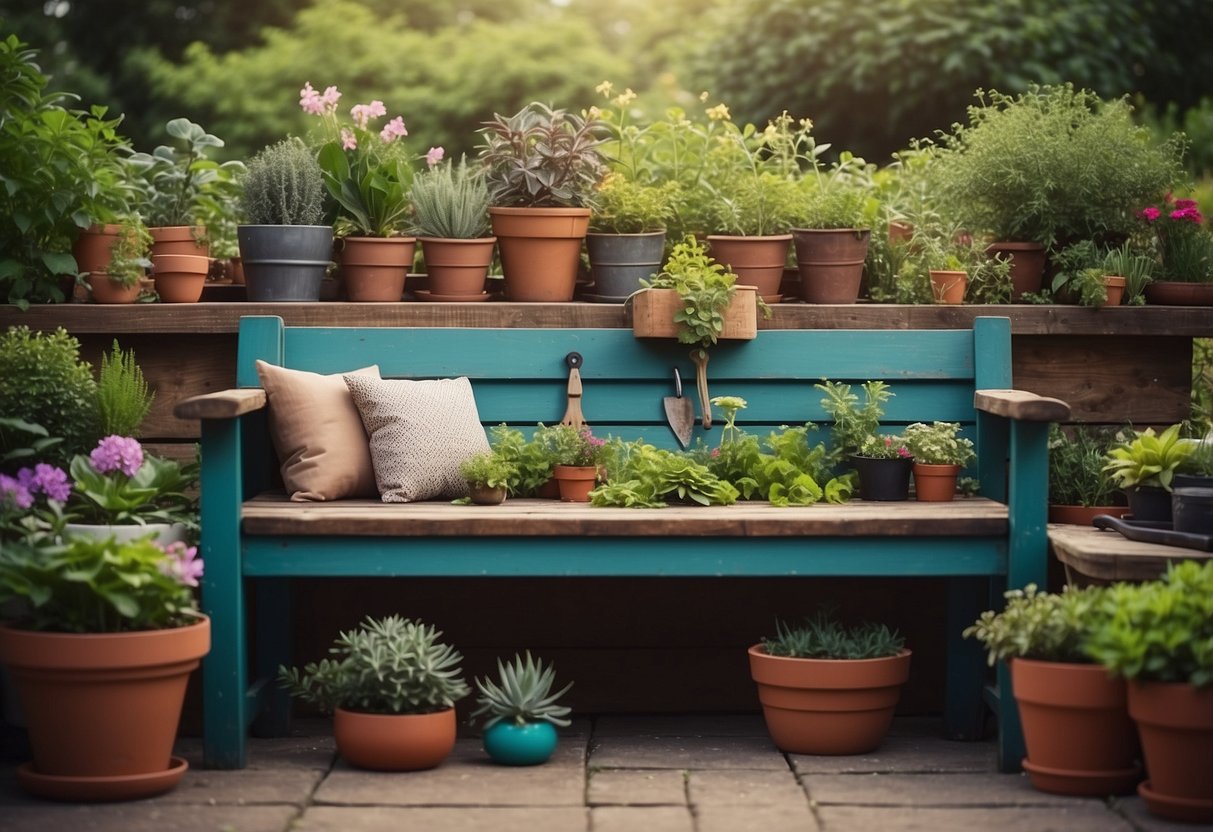
An upcycled door garden bench is a wonderful way to reuse old materials and add charm to your garden. You can use an old door as the backrest or the seat.
Begin by cleaning and sanding the door. Then, you can paint or stain it to match your garden decor.
Attach the door to sturdy legs made from wood or metal. Ensure the bench is stable and secure before use. Adding cushions or pillows can increase comfort and style. You’ll get a unique, personalized bench perfect for your outdoor space.
6) Compact Metal Workbench
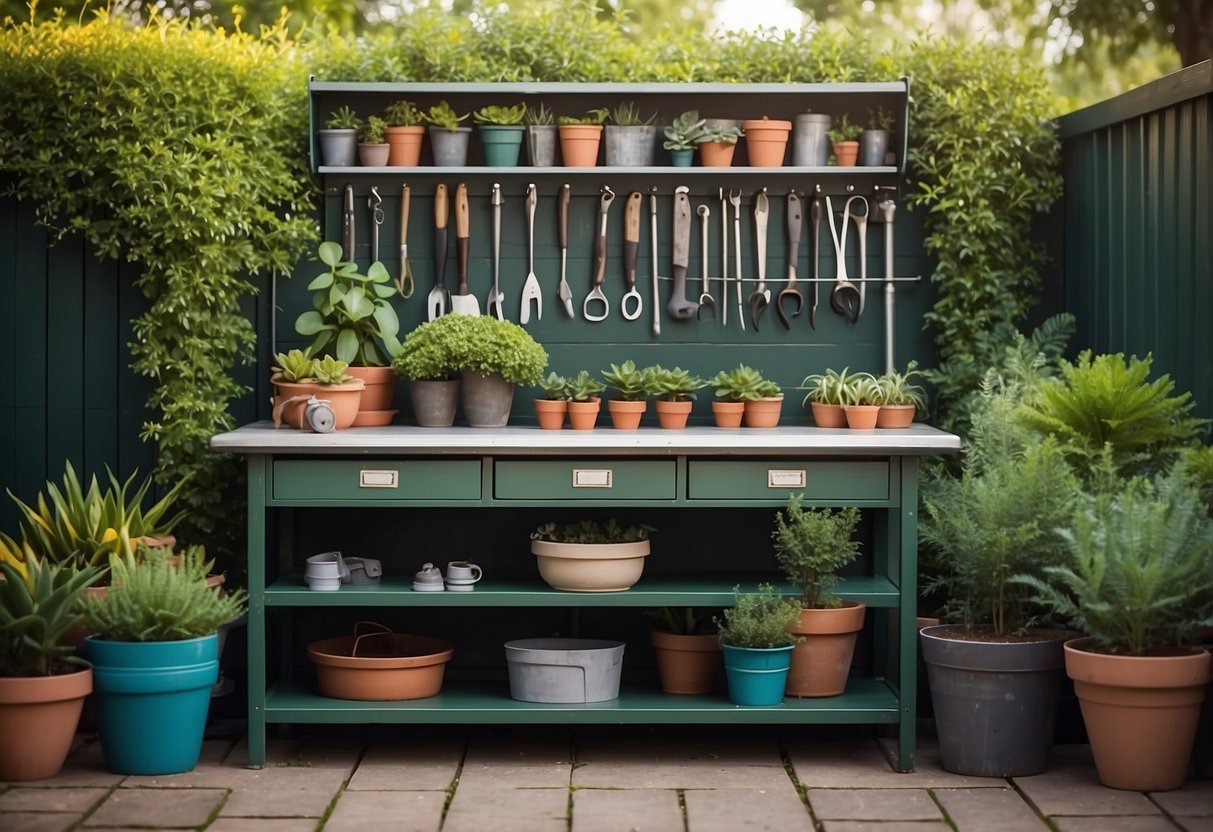
A compact metal workbench can be a great addition to your garden. It provides a sturdy surface for potting plants or working on small projects.
You can find designs made of Corten steel or aluminum. These materials are durable and weather-resistant. They often come with storage options, like a lower shelf or built-in bins.
A metal workbench fits nicely in small spaces. Its sleek, modern look blends well with any garden decor. Plus, cleaning is a breeze—just wipe it down with a cloth.
Consider a compact metal workbench if you need a reliable and stylish workspace in your garden.
7) Vibrant Painted Workbench
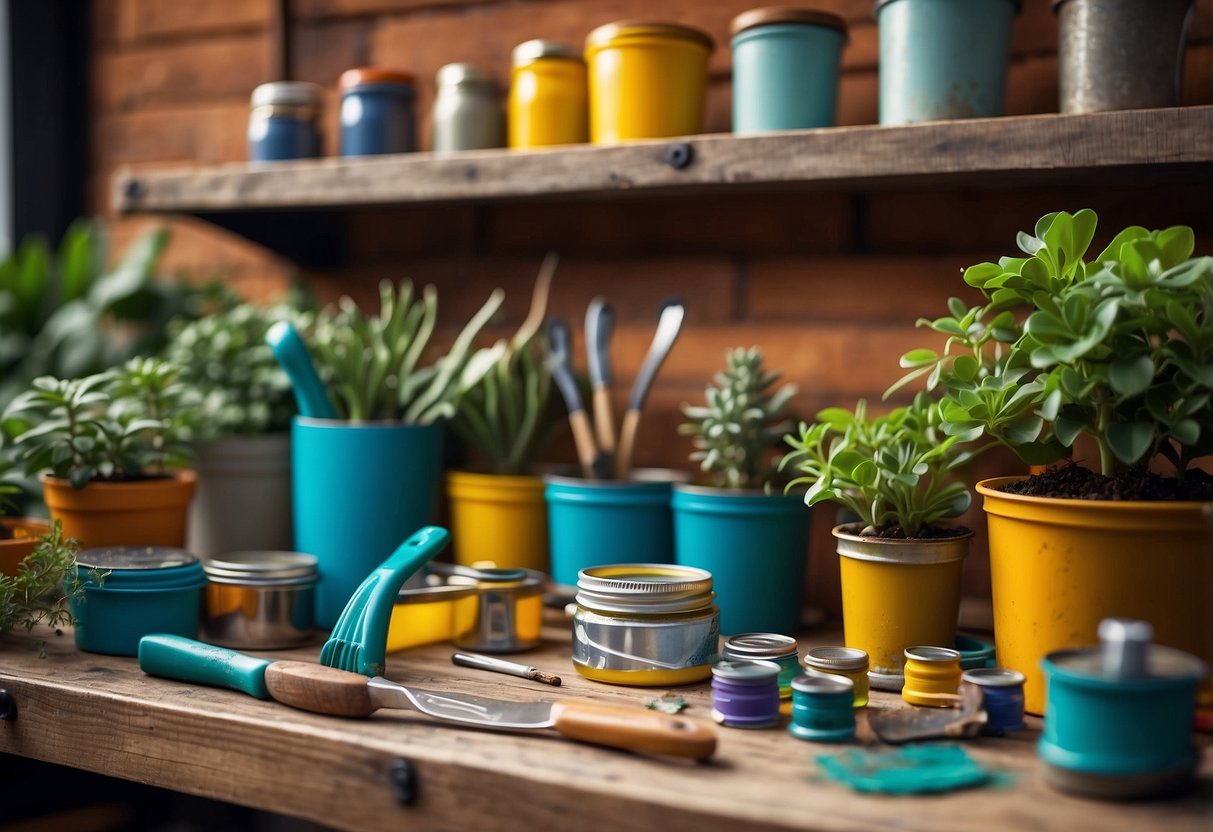
Adding some color to your garden workbench can make a big difference. A vibrant painted workbench can brighten up your outdoor space and inspire creativity.
You can go for bold colors like red, blue, or yellow. Even a simple coat of paint can transform a plain bench into a stylish feature.
Consider using weather-resistant paint to ensure it lasts longer. This way, your colorful bench stays looking good through the seasons. For ideas, check out these painted garden bench ideas.
8) Multi-Level Gardening Station
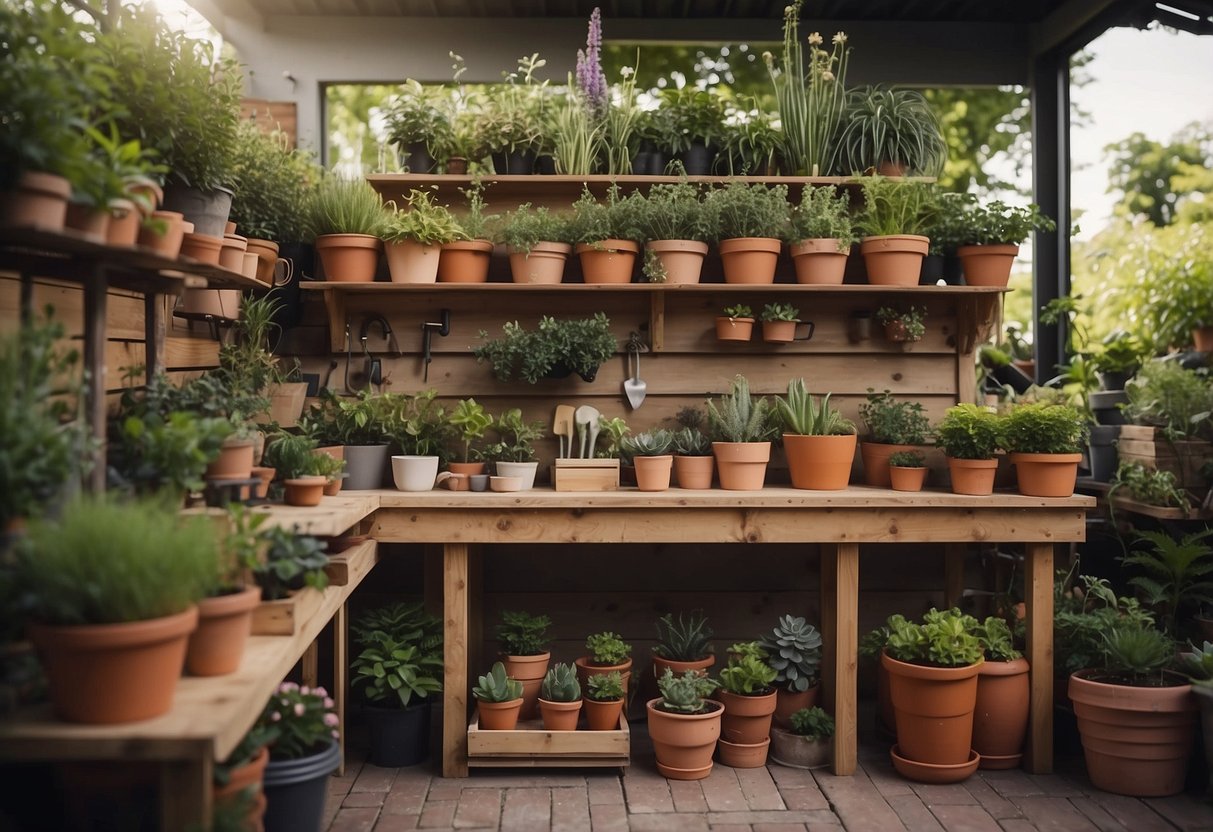
A multi-level gardening station makes use of vertical space, giving you more storage and working areas without taking up much room.
These stations usually have several shelves at different heights. The top shelf can hold small pots and tools, while the middle and lower shelves are great for larger items.
Some designs also include hooks or pegboards for hanging tools. You can find various plans like those on Epic Gardening to build your own multi-level station.
9) Vintage Iron Garden Workbench

A vintage iron garden workbench can bring a touch of classic charm to your garden.
These benches often feature intricate designs and sturdy construction, making them both beautiful and practical.
You might find these benches at antique stores or flea markets. They can add an elegant and timeless look to your outdoor workspace. Consider a unique piece like a Victorian cast iron bench to make your garden standout.
10) Reclaimed Wood Workbench

You can create a workbench using reclaimed wood that’s both sturdy and eco-friendly. Start by sourcing old wood from pallets, barns, or other structures.
Cut the wood to size for the top, legs, and supports. Assemble the pieces using screws or nails, ensuring a stable frame.
Sand the surface to smooth any rough edges. You may want to apply a sealant or paint to protect the wood from the elements.
Building a bench this way not only saves money but adds a rustic charm to your garden. For more ideas, visit here.
Benefits of a Garden Work Bench

Adding a garden work bench to your outdoor space can improve your gardening experience in several ways. Key benefits include ergonomics and enhanced organization.
Ergonomic Advantages
A garden work bench helps you work more comfortably, reducing strain on your back and knees. You can stand or sit while potting plants, trimming flowers, or arranging tools.
Many work benches are designed with adjustable heights, so you can customize them to fit your needs. This is especially useful if you spend many hours gardening.
The bench’s surface provides a steady and clean area to work, making it easier to handle delicate tasks without bending.
Organization and Storage
One of the main benefits of a garden work bench is the added organization. Many benches come with built-in shelves, drawers, and hooks.
You can keep your tools, pots, and gardening supplies in one place, making them easy to find when needed. This helps save time and keeps your garden neat.
Having a dedicated space for your gardening tasks can also make your work more efficient by reducing the time spent searching for tools.
Consider a work bench with extra features like a storage cabinet or removable trays for even more convenience. This ensures that everything you need is within arm’s reach when working.
Material Options for Garden Work Benches
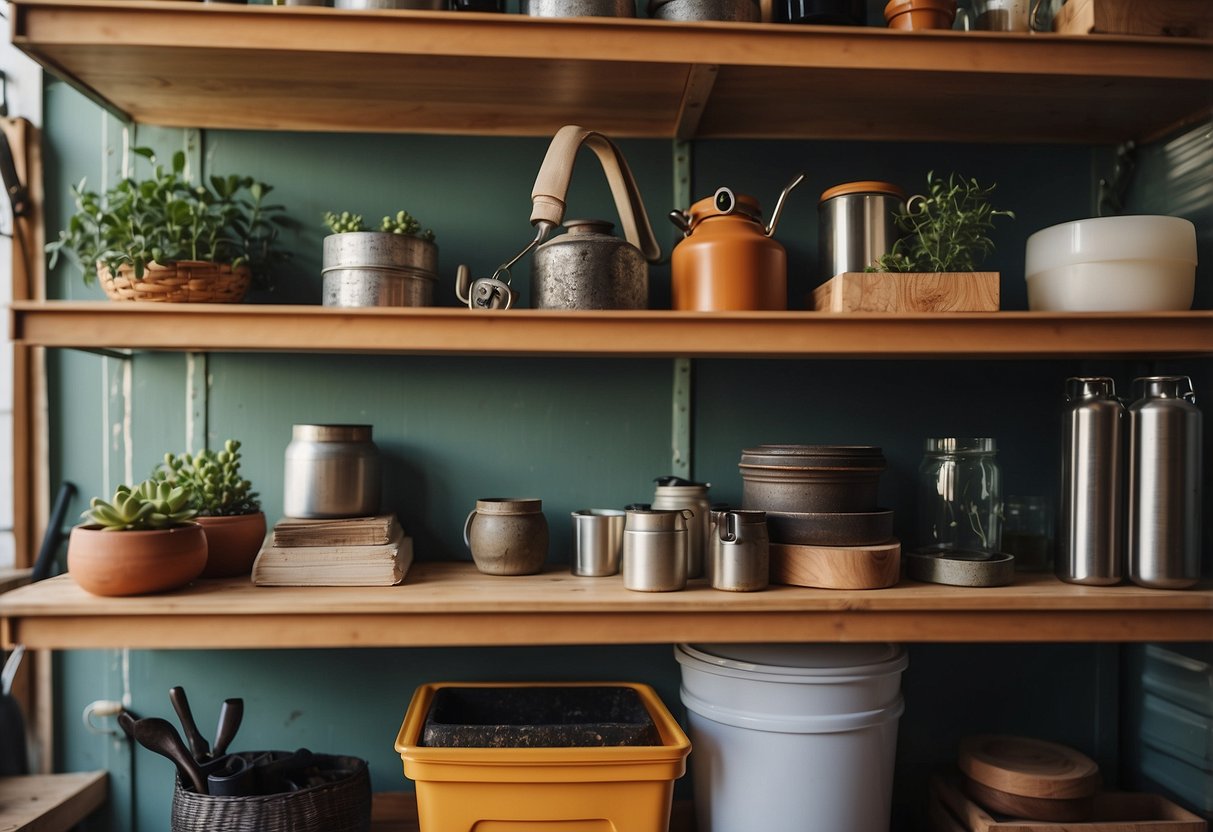
When choosing materials for your garden work bench, consider factors like durability, appearance, and cost. Each material type offers unique benefits and potential drawbacks.
Wooden Work Benches
Wood is a popular choice for garden work benches due to its natural look and versatility. Common woods used include cedar, redwood, and teak. These types of wood are durable, resistant to rot, and easy to work with. For added protection, you can apply a sealant or weatherproofing finish. Maintenance is crucial for wooden benches; regular cleaning and reapplying sealant can extend their life.
To personalize your wooden bench, consider painting or staining. This allows you to match the bench to your garden’s style or color scheme. Drawbacks may include a higher initial cost and the need for ongoing maintenance.
Metal Work Benches
Metal benches are known for their strength and modern look. Aluminum and steel are common choices. Aluminum is lightweight, rust-resistant, and easy to move around your garden. Steel, particularly stainless steel, is heavier and offers exceptional durability.
Metal benches require minimal maintenance—a simple wipe down with a damp cloth usually suffices. They are also resistant to most weather conditions, making them suitable for year-round use. Cost can vary, with aluminum often being more affordable than other metals. Be mindful that metal can get hot in direct sunlight, which might be uncomfortable for sitting.
Recycled Materials
Using recycled materials can be both eco-friendly and budget-friendly. Options include repurposed wood, plastic lumber, or even recycled metal. These materials help you contribute to a more sustainable environment while saving money. Recycled plastic lumber, for example, is resistant to rot, requires low maintenance, and is available in various colors and textures.
Creative reuse of old furniture or pallets can result in unique, custom benches. This approach requires some DIY skills, but it offers the opportunity to create something truly one-of-a-kind. Consider applying a protective finish to repurposed wood to enhance its durability when using recycled materials.
Customization Ideas

Customizing your garden work bench can make your projects more enjoyable and efficient. By adding features like shelves, drawers, and pegboards, you can keep your tools organized and within reach. Here are some practical customization ideas.
Incorporate Shelves and Drawers
Adding shelves and drawers to your work bench provides extra storage for tools and supplies. Shelves can be placed above or below the work surface for easy access. You can use wooden planks for a rustic look or metal shelves for a modern feel. Drawers are great for smaller items like screws, nails, and gardening gloves.
To make installation easier, you can buy pre-made drawer units and attach them under the bench. Tip: Use drawer dividers to keep items sorted and avoid clutter. You can also paint or stain the shelves and drawers to match the rest of your bench for a cohesive look.
Add Pegboards for Tools
A pegboard is a useful addition to your garden work bench. It allows you to hang tools like hammers, pruners, and trowels, keeping them visible and easy to grab. Install the pegboard on the wall behind your bench or attach it to the side of the bench itself.
Benefits:
- Organization: Keeps tools orderly and prevents them from getting lost.
- Accessibility: Tools are always in sight and within arm’s reach.
You can also customize the pegboard with hooks, small baskets, and shelves to hold a variety of tools. Tip: Label each spot on the pegboard for specific tools to maintain order.
Using these ideas, your garden work bench will be not only functional but also tailored to your needs.







